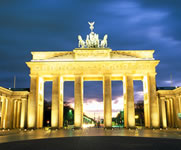
The Thuringian Forest – the "green heart" of Germany much lauded by poets and philosophers – lies between the river Werra and the Thuringian Basin. Around two thirds of this upland region - which is approx. 135 km long, up to 35 km wide and whose highest peak, the Grosse Beerenberg, reaches up to 982 metres in altitude - is covered with emerald green forest.
More accurately speaking, there are two mountain ranges that run into each other almost imperceptibly – the Thuringian Forest in the west and the Thuringian Slate Mountains in the east. This approx. 20 km-wide plateau slopes down to the south-east and stretches as far as the White Elster valley near Greiz. As the name suggests, this mountain range consists largely of slate. In the "upper woodlands" of the Thuringian Forest there are a number of tranquil, romantic villages surrounded by unspoilt countryside.

Absolute must-see attractions in the Truse valley include "gnome land" and Trusetal waterfall, which was created in 1865 and has two smaller falls followed by a 50-metre drop. This is a superb destination all year round. A large number of marked footpaths and cycle trails – and the most beautiful ridge walks in winter – are ideal for fascinating tours and excursions to attractions with or without skis.
The scenery in the Thuringian Forest is a remarkable mix of flowering mountain pastures and charming woodland. The ruins of Greifenstein Castle, once one of the largest feudal castles in existence, stand at the entrance to the romantic Schwarza Valley high above Bad Blankenburg.



